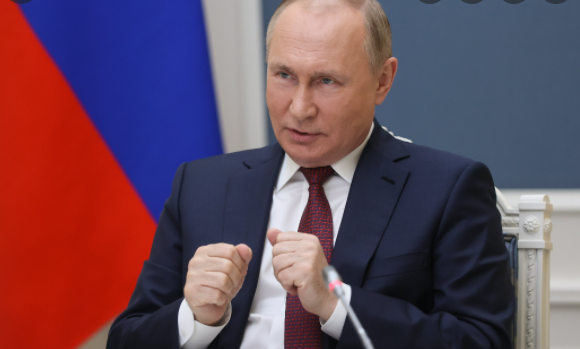Virendra Pandit
New Delhi: As expected, after a show of strength, relentless propaganda, flexing muscles for a fierce war, and mounting diplomatic pressures, Moscow began a partial pullback of its troops from the Ukraine borders on Tuesday with President Vladimir Putin saying his country does not want a war in Europe.
But it happened only after alleged Russian cyber-attacks on the smaller country’s defense websites and major banks achieved Moscow’s early targets.
So, for the time being, the possibility of an ‘imminent world war’ may have receded, although US President Joe Biden still suspected the opposite. Fearing a war anytime during the ongoing Winter Olympic Games (February 4-20), the US had advised its citizens to leave Ukraine at the earliest. Israel also followed suit. India was worried about its 20,000-odd students in Ukraine and so were several other countries.
A series of cyberattacks that immobilized the websites of the Ukrainian army, the defense ministry, and major banks preceded the Russian ‘pullout’ from the military drill in Crimea.
The cyberattacks targeted at least 10 Ukrainian websites and flooded them with junk data. They did not spare even the hosting providers for these websites.
Hinting at Russia’s involvement, an official Ukrainian statement said: “It is possible that the aggressor resorted to tactics of petty mischief because his aggressive plans aren’t working overall.”
Ukraine has suffered from alleged Russian aggression in cyberspace since 2014 when Moscow annexed the Crimean Peninsula and backed separatists in eastern Ukraine, the media reported.
To pressurise Ukraine against joining the European Union—and, by extension, the North Atlantic Treaty Organization (NATO)–Moscow deftly handled the situation to achieve the targets without going to war. Russia also mounted pressure on the West by hobnobbing with China.
America is far away, across the Atlantic Ocean, and would not be directly affected by war. Europe was panicked as it shares borders with Russia. Therefore, the two biggest NATO members, France and Germany, rushed to avert a conflict, fearing it could jeopardize the flow of Russian oil and gas to the Continent, and paralyze its giant economies.
Russia was aware of Europe’s fears when it mounted pressure on Ukraine and created a crisis the EU could hardly handle, even with distant support from the US.
Therefore, addressing a joint conference on Tuesday after talks with German Chancellor Olaf Scholz, Putin called for the conflict to be resolved through diplomacy with the West. He also said he was ready to discuss confidence-building measures (CBMs) with the US and NATO.
These indications had trickled after French President Emmanuel Macron visited Moscow last week to hold peace talks.
Moscow said on Tuesday some of its troops were returning to base after successfully carrying out ‘exercises’ (military drills) near Ukraine, but the US and NATO said they had yet to see any evidence of a de-escalation to avert war.
“We are ready to work further together. We are ready to go down the negotiations track,” Putin said. He also confirmed a “partial pullback of troops” from its ex-Soviet neighbor’s border. Ukraine was part of the 15-member Soviet Union until 1991.
The Ukraine crisis, the worst between Russia and the West since the Cold War ended, reached a peak this week, with US officials warning that a full-scale invasion, including an assault on the Ukrainian capital of Kyiv, could start soon.
The German Chancellor said, “For Europeans, it is clear that lasting security cannot be achieved against Russia but only with Russia.” Germany’s Foreign Minister Annalena Baerbock said, “every real step of a de-escalation would be a reason for hope.”
Reacting to Putin’s announcement, a French government spokesperson said it was a “positive signal” if Russian forces were indeed withdrawing.

